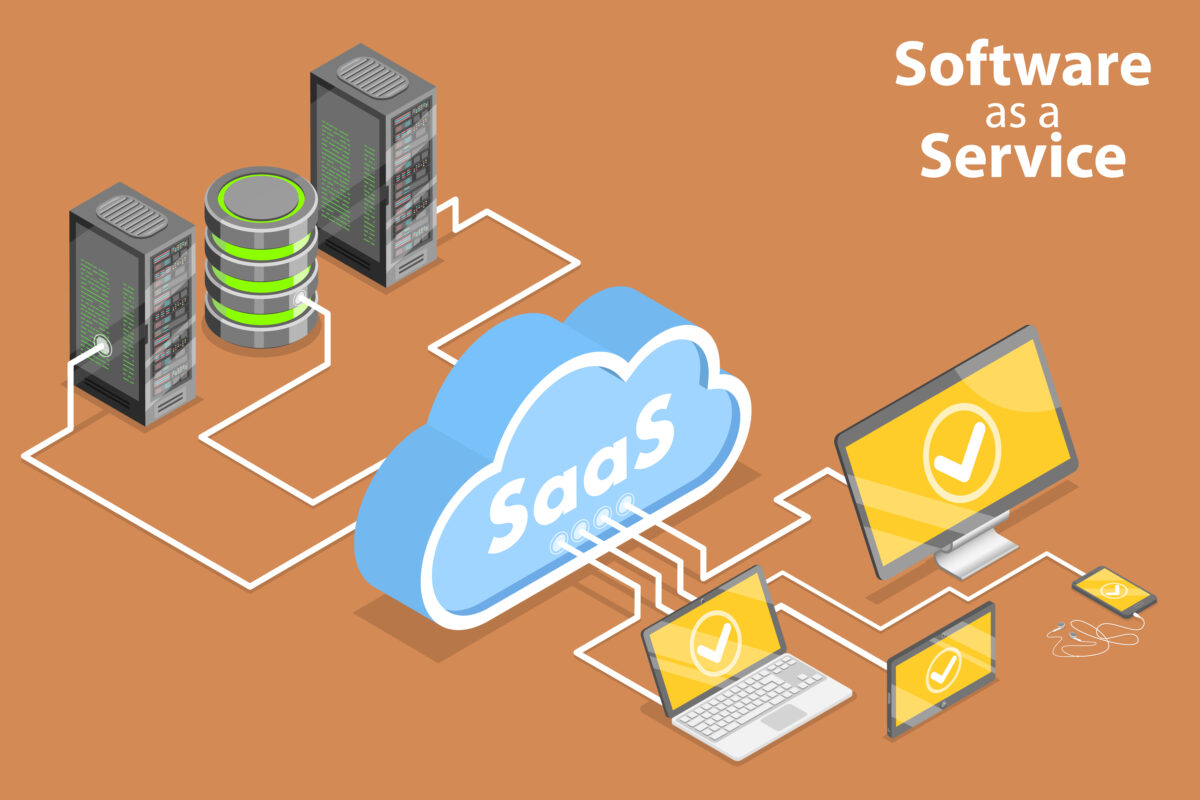
SEO for SaaS: Tips to Boost Your Online Presence (Part 1)
As a marketing and communications professional, you know that a robust online presence is no longer an option when it comes to brand visibility—it’s a necessity. This is especially true for SaaS (Software as a Service) companies that face high competition.
Which is why Search Engine Optimization (SEO) is crucial.
Given the vastness of the topic, we’ve split it into two articles. Today, we’re going to delve into what SEO is, how it impacts SaaS marketing efforts, and what tactics are important in on-page and off-page SEO. You can check out Part 2 here.
Understanding SEO
SEO is the process of optimizing your website and online content to improve its visibility in search engine results pages (SERPs). This is achieved through the use of relevant keywords, high-quality content, and a variety of other on-page and off-page optimization techniques.
When someone types a query into a search engine, the engine’s algorithms sift through billions of pieces of content and arrange them in an order that it believes is most relevant to the query. The goal of SEO is to ’convince’ these algorithms that your content is the most valuable and relevant, helping your web pages rank higher in SERPs.
Significance of SEO for SaaS Marketing
SEO is an incredibly powerful tool in the SaaS marketer’s arsenal. It helps improve your website’s visibility on search engines like Google, Bing, and Yahoo, making it easier:
- to allow potential customers to find you amidst a sea of competitors
- to significantly increase organic traffic
- to generate high-quality leads
- to drive revenue

However, a successful SEO strategy isn’t just about getting people to your website. It’s about attracting the right people – those who are actively seeking the solutions your software provides.
Consumers today don’t just want to know what your product does. They want to understand how it can solve their specific problems, and why they should choose your solution over others. By optimizing your website and content around the specific search terms and needs of your target customers, you can position your brand as the go-to solution in your niche and attract more qualified leads—those who are more likely to convert into paying customers. Let’s delve more into how you can make this happen.
SEO also helps retain existing customers. By consistently providing valuable, optimized content, you can keep your current users engaged, increase their lifetime value, and turn them into brand advocates.
Unlike paid advertising, the effects of SEO are long-term. Seeing the results of your SEO efforts may take time, but once you’ve achieved high rankings, they can sustain over a long period, providing a steady stream of organic traffic and leads.
It all starts with the right keywords.
Keyword Research for SaaS
Think of keywords as the bridge that connects your prospective customers to your online content. Effective keyword research helps you understand the language, terms, and phrases your target audience uses to search for information and solutions that your business provides. You can then optimize your content around this input. This makes it easier for search engines to match your content with relevant queries, leading to increased visibility, more organic traffic, and ultimately, more leads and conversions for your business.
Tips for Finding Relevant Keywords in the SaaS Industry
Finding the right keywords in the competitive SaaS landscape can be challenging but rewarding. Here are some tips to help you get started:
- Understand Your Customers: Start by understanding who your customers are and what problems your software solves for them. This will give you a solid foundation to identify keywords that align with their needs.
- Think Like a Customer: Put yourself in your customer’s shoes. What terms or phrases would they use when searching for a solution like yours?
- Focus on Long-Tail Keywords: These are longer, more specific keyword phrases that visitors are more likely to use when they’re closer to the point of purchase. For example, instead of “project management software,” try “project management software for remote teams.”
- Check Out the Competition: Look at what keywords your competitors are targeting. While you shouldn’t replicate their strategy, it can provide valuable insights and inspiration.
Tools and Techniques for Effective Keyword Research
- Google Keyword Planner: A free Google Ads tool that provides keyword ideas and traffic estimates to help you build a Search Network campaign.
- SEMrush: A comprehensive SEO tool that provides detailed keyword analytics, including volume, difficulty, and competitive density.
- AnswerThePublic: Great for finding long-tail keywords and understanding user intent, this tool visualizes search questions and suggested autocomplete searches in an image called a search cloud.
- Use Google Autocomplete: Start typing a keyword into Google search and see what other phrases pop up in the dropdown menu. These are commonly searched terms related to your keyword.
- Look at ‘People Also Ask’ and ‘Related Searches’: These sections on Google SERPs can provide additional keyword ideas that are related to your main keyword.
- Most importantly, iterate: Keyword research isn’t a one-and-done task. It should be an ongoing part of your SEO strategy as customer needs, market trends, and search algorithms evolve.
On-Page SEO Strategies for SaaS
On-page SEO refers to all the tactics you can undertake on the website itself to positively influence its search engine rankings.
Role of Content in SEO
Content is the heart of on-page SEO. Search engines, especially Google, prioritize high-quality, relevant content that provides value to readers. For your SaaS business, this could be blog posts explaining how to use your software, case studies illustrating its benefits, or white papers discussing industry trends and challenges.
Your content should be engaging, informative, and most importantly, centred around the keywords you identified during your keyword research. The goal is to create content that resonates with your audience and addresses their specific needs or pain points.
Moreover, regularly updating your website with new content tells search engines that your site is active and providing up-to-date information, which can positively impact your search rankings.
Importance of Meta Tags, Headers, and URL Structure in SEO
- Meta Tags: These are snippets of text that describe a page’s content and appear in the page’s code, not on the page. For SEO, the title tag and the meta description are most important. They give search engines and users a brief summary of what your page is about.
- Headers (H1, H2, H3, etc.): Headers help structure your content and make it easier for readers and search engines to navigate your page. Your main keyword should be in your H1 (title), and related keywords can be in subheadings.
- URL Structure: A clear and concise URL structure can enhance user experience and improve your website’s crawl-ability. Include your main keyword in the URL and keep it short and descriptive.
Role of Internal Linking and Image Optimization in SEO
Two more essential elements of on-page SEO are internal linking and image optimization:
- Internal Linking: Internal linking is the practice of linking one page on your website to another. This helps guide visitors to other relevant content on your site, increasing dwell time. It also helps search engines understand the structure and hierarchy of your website, boosting the ranking power of different pages.
- Image Optimization: Images can enhance the user experience, but they need to be properly optimized. Use descriptive file names and alt text (a brief description of the image), and keep file sizes as small as possible to ensure fast loading times.
Off-Page SEO Strategies for SaaS
Off-page SEO tactics include all those that occur off of your website but drive traffic to your site.
Significance and Acquisition of Backlinks
Backlinks (inbound links or external links) are links from other websites that point to your site. They are one of the most critical factors in how Google ranks web pages. When other reputable sites link to yours, it signals to search engines that your content is valuable and trustworthy, positively impacting your site’s authority and search rankings.
Acquiring high-quality backlinks can be challenging but here are a few strategies:
- Create Link-Worthy Content: Create high-quality, unique content that others find valuable enough to link to.
- Outreach: Reach out to bloggers, journalists, and influencers in your industry and let them know about your content. If they find it valuable, they might link to it from their own content.
- Guest Posting: Write a guest post for a reputable site in your industry that allows you to include at least one link back to your site in your author bio or within the content.
- Broken Link Building: Reach out to owners of sites that contain broken links in relevant content, and suggest replacing them with links to your content.

Common Link Building Mistakes
Developing a robust link building strategy requires creativity, persistence, and a deep understanding of your target audience. Avoid these common mistakes that could potentially harm your rankings:
- Prioritizing Quantity Over Quality: A few high-quality links from reputable, high-authority sites are far more beneficial than numerous low-quality links from spammy sites.
- Buying Links: Purchasing links is against Google’s Webmaster Guidelines and can lead to penalties. Focus instead on earning links through quality content and relationship building.
- Neglecting Internal Links: Properly linking your own pages to each other can improve your site’s navigation, provide additional value to users, and enhance your SEO.
Role of Social Media in Off-Page SEO
Social media signals are not a direct ranking factor. But they can amplify the reach of your content, increasing its visibility and the likelihood of earning backlinks. When your content gets shared on social media, it reaches a larger audience, increases traffic to your site, and enhances brand recognition.
To leverage social media for off-page SEO, ensure you’re regularly sharing engaging content, encouraging users to share your posts, and actively participating in conversations with your followers. Also, consider using social media platforms to build relationships with influencers who can help extend your reach even further.
Guest Blogging and Influencer Outreach
Guest blogging involves writing content for other companies’ blogs. It’s an effective way to reach a wider audience, boost your reputation, and earn valuable backlinks. Always look for reputable sites in your industry that have high domain authority and an engaged audience.
Influencer outreach involves building relationships with influencers in your industry and collaborating with them to leverage their following and increase your content’s reach, improve your brand’s credibility, and potentially earn backlinks.
That’s all for Part 1 on the topic of SEO for SaaS: Tips to Boost Your Online Presence.
Read Part 2 here to delve into Technical and Local SEO, and how to track the success of your SEO strategy and efforts.
Wondering how to optimize your website for search engine rankings?
Speak to an SEO Specialist at Cyan Solutions today! Contact Us.

Discover what Cyan can do for you
We want to get to know you better so we can understand what services are going to help you meet your goals.